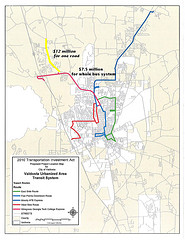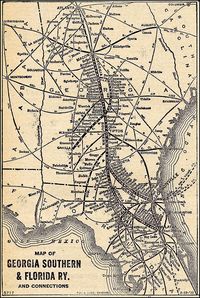 I asked why the Old US 41 North widening project changed from $8 million on the unconstrained list to $12 million on the constrained list, an increase of $4 million or 50% when the description did not change?
The answer indicates GDOT and local governments want to drive development north in the county, leaving pedestrians and bicyclists stranded yet having to pay.
I asked why the Old US 41 North widening project changed from $8 million on the unconstrained list to $12 million on the constrained list, an increase of $4 million or 50% when the description did not change?
The answer indicates GDOT and local governments want to drive development north in the county, leaving pedestrians and bicyclists stranded yet having to pay.
Corey Hull responded:
Halfway through we received new cost estimates….
GDOT did the cost estimates, in cooperation with the local government that was responsible for that.
A state employee told me after the meeting that GDOT raised some estimates because it thought the local government, in this case the Lowndes County Commission and staff, didn’t put in enough to cover the project. I don’t know whether GDOT was figuring by Atlanta costs or not…. At least the cost didn’t go up further in the final project list; I just checked and it’s still $12 million.
Corey elaborated that some projects increased and some decreased. I asked him which ones did which. He said he’d have to go back and compare. Later he helped me produce a list of comparisons of costs of Lowndes County projects, which shows that one went down by 30% and three went up by 50% or more. One, RC11-000099 St. Augustine at Norman Intersection Improvements, went up by 131.5%.
That $12 million for widening less than 3 miles of one road is more than one item that was in the unconstrained list  but cut from the constrained list: $7.5 million for a bus system, with three bus lines that would connect Wiregrass Tech, Five Points, Downtown, Moody, East Side, South Side, West Side, and the Mall. A bus system recommended by the Industrial Authority’s Community Assessment to aid in employee attendance, industry recruitment, and workforce.
but cut from the constrained list: $7.5 million for a bus system, with three bus lines that would connect Wiregrass Tech, Five Points, Downtown, Moody, East Side, South Side, West Side, and the Mall. A bus system recommended by the Industrial Authority’s Community Assessment to aid in employee attendance, industry recruitment, and workforce.
 You could probably even start up a substantial commuter rail system using existing freight line tracks for less than $12 million. Even though GDOT apparently only believes in roads and bridges, busses and trains are actually more cost-effective, especially for lower-income people. The same lower-income people who will be disproportionately taxed by T-SPLOST as a percentage of their income.
You could probably even start up a substantial commuter rail system using existing freight line tracks for less than $12 million. Even though GDOT apparently only believes in roads and bridges, busses and trains are actually more cost-effective, especially for lower-income people. The same lower-income people who will be disproportionately taxed by T-SPLOST as a percentage of their income.
Instead, the description for the Old US 41 North project admits the county is driving population and development up that road:
Over the past 15 years with the installation of Lowndes County Water and Sewer in this area, nine residential subdivisions, a private K-12 school, and numerous commercial developments have developed throughout this corridor. Commercial development includes a restaurant, convenience stores, car dealership, numerous doctors’ offices and a hospital. Lowndes County also has a fire department and solid waste collection facility located in this area. With the future plans for further development in this area both commercially and residentially, future traffic models indicate traffic counts will exceed 20,000 vehicles per day. The majority of the development has occurred in this area and the continued growth is also anticipated in this proximity.
There is a sop to bicyclists and pedestrians at the end of the description:
It is proposed to construct bike lanes and possibly sidewalks throughout the project for the residents of this area to use.
Notice that phrasing: “It is proposed”. That’s not the same as included in the budget.
So instead of promoting public transportation, like the Industrial Authority’s assessment recommends, and instead of promoting development close to existing services, like the county’s own consultant UGA Prof. Jeffrey H. Dorfman recommended, the county wants to use T-SPLOST to drive further sprawl. Sprawl which Dr. Dorfman said was
a certain ticket to fiscal ruin*
* Or at least big tax increases.
That’s right, Lowndes County wants to use the T-SPLOST sales tax in a way that will likely cause property tax increases.
Here’s the video:
Why did old US 41 N increase from $8 M to $12 M? —John S. Quarterman @ T-SPLOST 2011-09-19
T-SPLOST Public Meeting, Southern Georgia Regional Commission (SGRC),
Corey Hull,
Valdosta, Lowndes County, Georgia, 19 September 2011.
Video by Gretchen Quarterman for Lowndes Area Knowledge Exchange (LAKE).
-jsq
Short Link: